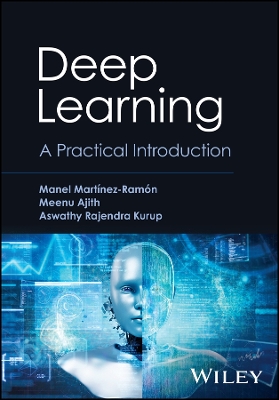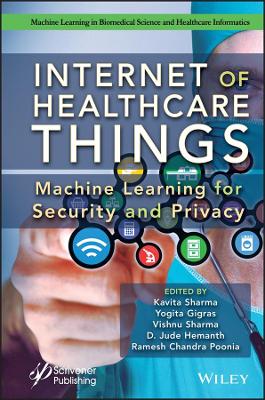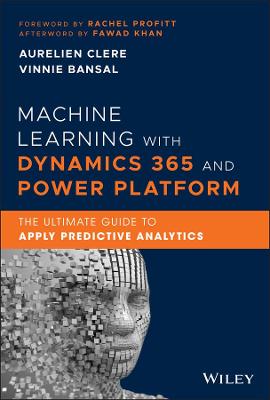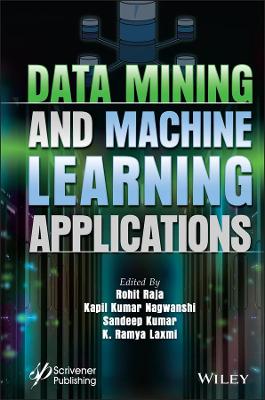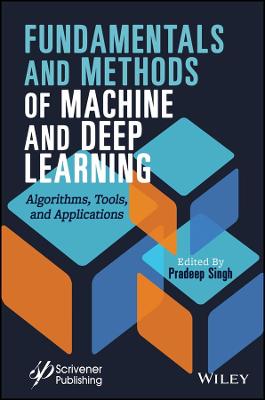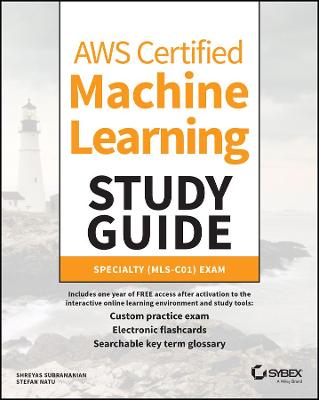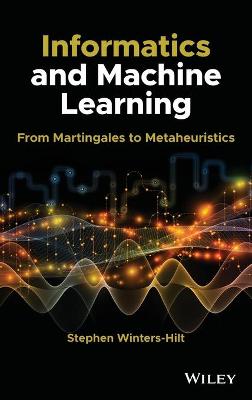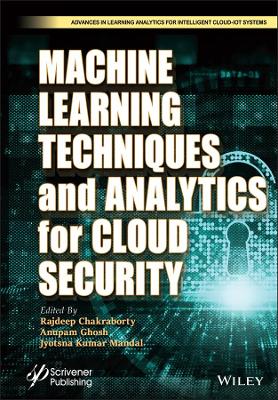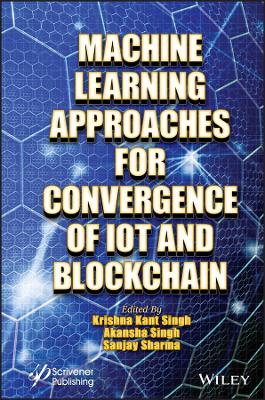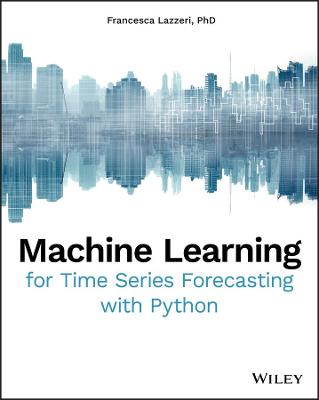Deep Learning for Physical Scientists
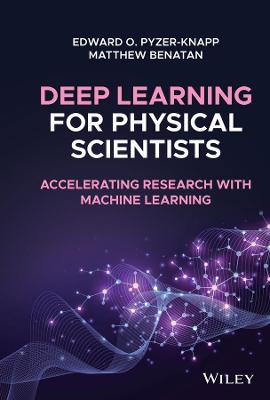 -15%
portes grátis
-15%
portes grátis
Deep Learning for Physical Scientists
Accelerating Research with Machine Learning
Pyzer-Knapp, Edward O.; Benatan, Matthew
John Wiley & Sons Inc
10/2021
208
Dura
Inglês
9781119408338
15 a 20 dias
438
Acknowledgements xii
1 Prefix - Learning to "Think Deep" 1
1.1 So What Do I Mean by Changing the Way You Think? 2
2 Setting Up a Python Environment for Deep Learning Projects 5
2.1 Python Overview 5
2.2 Why Use Python for Data Science? 6
2.3 Anaconda Python 7
2.3.1 Why Use Anaconda? 7
2.3.2 Downloading and Installing Anaconda Python 7
2.3.2.1 Installing TensorFlow 9
2.4 Jupyter Notebooks 10
2.4.1 Why Use a Notebook? 10
2.4.2 Starting a Jupyter Notebook Server 11
2.4.3 Adding Markdown to Notebooks 12
2.4.4 A Simple Plotting Example 14
2.4.5 Summary 16
3 Modelling Basics 17
3.1 Introduction 17
3.2 Start Where You Mean to Go On - Input Definition and Creation 17
3.3 Loss Functions 18
3.3.1 Classification and Regression 19
3.3.2 Regression Loss Functions 19
3.3.2.1 Mean Absolute Error 19
3.3.2.2 Root Mean Squared Error 19
3.3.3 Classification Loss Functions 20
3.3.3.1 Precision 21
3.3.3.2 Recall 21
3.3.3.3 F1 Score 22
3.3.3.4 Confusion Matrix 22
3.3.3.5 (Area Under) Receiver Operator Curve (AU-ROC) 23
3.3.3.6 Cross Entropy 25
3.4 Overfitting and Underfitting 28
3.4.1 Bias-Variance Trade-Off 29
3.5 Regularisation 31
3.5.1 Ridge Regression 31
3.5.2 LASSO Regularisation 33
3.5.3 Elastic Net 34
3.5.4 Bagging and Model Averaging 34
3.6 Evaluating a Model 35
3.6.1 Holdout Testing 35
3.6.2 Cross Validation 36
3.7 The Curse of Dimensionality 37
3.7.1 Normalising Inputs and Targets 37
3.8 Summary 39
Notes 39
4 Feedforward Networks and Multilayered Perceptrons 41
4.1 Introduction 41
4.2 The Single Perceptron 41
4.2.1 Training a Perceptron 41
4.2.2 Activation Functions 42
4.2.3 Back Propagation 43
4.2.3.1 Weight Initialisation 45
4.2.3.2 Learning Rate 46
4.2.4 Key Assumptions 46
4.2.5 Putting It All Together in TensorFlow 47
4.3 Moving to a Deep Network 49
4.4 Vanishing Gradients and Other "Deep" Problems 53
4.4.1 Gradient Clipping 54
4.4.2 Non-saturating Activation Functions 54
4.4.2.1 ReLU 54
4.4.2.2 Leaky ReLU 56
4.4.2.3 ELU 57
4.4.3 More Complex Initialisation Schemes 57
4.4.3.1 Xavier 58
4.4.3.2 He 58
4.4.4 Mini Batching 59
4.5 Improving the Optimisation 60
4.5.1 Bias 60
4.5.2 Momentum 63
4.5.3 Nesterov Momentum 63
4.5.4 (Adaptive) Learning Rates 63
4.5.5 AdaGrad 64
4.5.6 RMSProp 65
4.5.7 Adam 65
4.5.8 Regularisation 66
4.5.9 Early Stopping 66
4.5.10 Dropout 68
4.6 Parallelisation of learning 69
4.6.1 Hogwild! 69
4.7 High and Low-level Tensorflow APIs 70
4.8 Architecture Implementations 72
4.9 Summary 73
4.10 Papers to Read 73
5 Recurrent Neural Networks 77
5.1 Introduction 77
5.2 Basic Recurrent Neural Networks 77
5.2.1 Training a Basic RNN 78
5.2.2 Putting It All Together in TensorFlow 79
5.2.3 The Problem with Vanilla RNNs 81
5.3 Long Short-Term Memory (LSTM) Networks 82
5.3.1 Forget Gate 82
5.3.2 Input Gate 84
5.3.3 Output Gate 84
5.3.4 Peephole Connections 85
5.3.5 Putting It All Together in TensorFlow 86
5.4 Gated Recurrent Units 87
5.4.1 Putting It All Together in TensorFlow 88
5.5 Using Keras for RNNs 88
5.6 Real World Implementations 89
5.7 Summary 89
5.8 Papers to Read 90
6 Convolutional Neural Networks 93
6.1 Introduction 93
6.2 Fundamental Principles of Convolutional Neural Networks 94
6.2.1 Convolution 94
6.2.2 Pooling 95
6.2.2.1 Why Use Pooling? 95
6.2.2.2 Types of Pooling 96
6.2.3 Stride and Padding 99
6.2.4 Sparse Connectivity 101
6.2.5 Parameter Sharing 101
6.2.6 Convolutional Neural Networks with TensorFlow 102
6.3 Graph Convolutional Networks 103
6.3.1 Graph Convolutional Networks in Practice 104
6.4 Real World Implementations 107
6.5 Summary 108
6.6 Papers to Read 108
7 Auto-Encoders 111
7.1 Introduction 111
7.1.1 Auto-Encoders for Dimensionality Reduction 111
7.2 Getting a Good Start - Stacked Auto-Encoders, Restricted Boltzmann Machines, and Pretraining 115
7.2.1 Restricted Boltzmann Machines 115
7.2.2 Stacking Restricted Boltzmann Machines 118
7.3 Denoising Auto-Encoders 120
7.4 Variational Auto-Encoders 121
7.5 Sequence to Sequence Learning 125
7.6 The Attention Mechanism 126
7.7 Application in Chemistry: Building a Molecular Generator 127
7.8 Summary 132
7.9 Real World Implementations 132
7.10 Papers to Read 132
8 Optimising Models Using Bayesian Optimisation 135
8.1 Introduction 135
8.2 Defining Our Function 135
8.3 Grid and Random Search 136
8.4 Moving Towards an Intelligent Search 137
8.5 Exploration and Exploitation 137
8.6 Greedy Search 138
8.6.1 Key Fact One - Exploitation Heavy Search is Susceptible to Initial Data Bias 139
8.7 Diversity Search 141
8.8 Bayesian Optimisation 142
8.8.1 Domain Knowledge (or Prior) 142
8.8.2 Gaussian Processes 145
8.8.3 Kernels 146
8.8.3.1 Stationary Kernels 146
8.8.3.2 Noise Kernel 147
8.8.4 Combining Gaussian Process Prediction and Optimisation 149
8.8.4.1 Probability of Improvement 149
8.8.4.2 Expected Improvement 150
8.8.5 Balancing Exploration and Exploitation 151
8.8.6 Upper and Lower Confidence Bound Algorithm 151
8.8.7 Maximum Entropy Sampling 152
8.8.8 Optimising the Acquisition Function 153
8.8.9 Cost Sensitive Bayesian Optimisation 155
8.8.10 Constrained Bayesian Optimisation 158
8.8.11 Parallel Bayesian Optimisation 158
8.8.11.1 qEI 158
8.8.11.2 Constant Liar and Kriging Believer 160
8.8.11.3 Local Penalisation 162
8.8.11.4 Parallel Thompson Sampling 162
8.8.11.5 K-Means Batch Bayesian Optimisation 162
8.9 Summary 163
8.10 Papers to Read 163
Case Study 1 Solubility Prediction Case Study 167
CS 1.1 Step 1 - Import Packages 167
CS 1.2 Step 2 - Importing the Data 168
CS 1.3 Step 3 - Creating the Inputs 168
CS 1.4 Step 4 - Splitting into Training and Testing 168
CS 1.5 Step 5 - Defining Our Model 169
CS 1.6 Step 6 - Running Our Model 169
CS 1.7 Step 7 - Automatically Finding an Optimised Architecture Using Bayesian Optimisation 170
Case Study 2 Time Series Forecasting with LSTMs 173
CS 2.1 Simple LSTM 173
CS 2.2 Sequence-to-Sequence LSTM 177
Case Study 3 Deep Embeddings for Auto-Encoder-Based Featurisation 185
Index 190
Acknowledgements xii
1 Prefix - Learning to "Think Deep" 1
1.1 So What Do I Mean by Changing the Way You Think? 2
2 Setting Up a Python Environment for Deep Learning Projects 5
2.1 Python Overview 5
2.2 Why Use Python for Data Science? 6
2.3 Anaconda Python 7
2.3.1 Why Use Anaconda? 7
2.3.2 Downloading and Installing Anaconda Python 7
2.3.2.1 Installing TensorFlow 9
2.4 Jupyter Notebooks 10
2.4.1 Why Use a Notebook? 10
2.4.2 Starting a Jupyter Notebook Server 11
2.4.3 Adding Markdown to Notebooks 12
2.4.4 A Simple Plotting Example 14
2.4.5 Summary 16
3 Modelling Basics 17
3.1 Introduction 17
3.2 Start Where You Mean to Go On - Input Definition and Creation 17
3.3 Loss Functions 18
3.3.1 Classification and Regression 19
3.3.2 Regression Loss Functions 19
3.3.2.1 Mean Absolute Error 19
3.3.2.2 Root Mean Squared Error 19
3.3.3 Classification Loss Functions 20
3.3.3.1 Precision 21
3.3.3.2 Recall 21
3.3.3.3 F1 Score 22
3.3.3.4 Confusion Matrix 22
3.3.3.5 (Area Under) Receiver Operator Curve (AU-ROC) 23
3.3.3.6 Cross Entropy 25
3.4 Overfitting and Underfitting 28
3.4.1 Bias-Variance Trade-Off 29
3.5 Regularisation 31
3.5.1 Ridge Regression 31
3.5.2 LASSO Regularisation 33
3.5.3 Elastic Net 34
3.5.4 Bagging and Model Averaging 34
3.6 Evaluating a Model 35
3.6.1 Holdout Testing 35
3.6.2 Cross Validation 36
3.7 The Curse of Dimensionality 37
3.7.1 Normalising Inputs and Targets 37
3.8 Summary 39
Notes 39
4 Feedforward Networks and Multilayered Perceptrons 41
4.1 Introduction 41
4.2 The Single Perceptron 41
4.2.1 Training a Perceptron 41
4.2.2 Activation Functions 42
4.2.3 Back Propagation 43
4.2.3.1 Weight Initialisation 45
4.2.3.2 Learning Rate 46
4.2.4 Key Assumptions 46
4.2.5 Putting It All Together in TensorFlow 47
4.3 Moving to a Deep Network 49
4.4 Vanishing Gradients and Other "Deep" Problems 53
4.4.1 Gradient Clipping 54
4.4.2 Non-saturating Activation Functions 54
4.4.2.1 ReLU 54
4.4.2.2 Leaky ReLU 56
4.4.2.3 ELU 57
4.4.3 More Complex Initialisation Schemes 57
4.4.3.1 Xavier 58
4.4.3.2 He 58
4.4.4 Mini Batching 59
4.5 Improving the Optimisation 60
4.5.1 Bias 60
4.5.2 Momentum 63
4.5.3 Nesterov Momentum 63
4.5.4 (Adaptive) Learning Rates 63
4.5.5 AdaGrad 64
4.5.6 RMSProp 65
4.5.7 Adam 65
4.5.8 Regularisation 66
4.5.9 Early Stopping 66
4.5.10 Dropout 68
4.6 Parallelisation of learning 69
4.6.1 Hogwild! 69
4.7 High and Low-level Tensorflow APIs 70
4.8 Architecture Implementations 72
4.9 Summary 73
4.10 Papers to Read 73
5 Recurrent Neural Networks 77
5.1 Introduction 77
5.2 Basic Recurrent Neural Networks 77
5.2.1 Training a Basic RNN 78
5.2.2 Putting It All Together in TensorFlow 79
5.2.3 The Problem with Vanilla RNNs 81
5.3 Long Short-Term Memory (LSTM) Networks 82
5.3.1 Forget Gate 82
5.3.2 Input Gate 84
5.3.3 Output Gate 84
5.3.4 Peephole Connections 85
5.3.5 Putting It All Together in TensorFlow 86
5.4 Gated Recurrent Units 87
5.4.1 Putting It All Together in TensorFlow 88
5.5 Using Keras for RNNs 88
5.6 Real World Implementations 89
5.7 Summary 89
5.8 Papers to Read 90
6 Convolutional Neural Networks 93
6.1 Introduction 93
6.2 Fundamental Principles of Convolutional Neural Networks 94
6.2.1 Convolution 94
6.2.2 Pooling 95
6.2.2.1 Why Use Pooling? 95
6.2.2.2 Types of Pooling 96
6.2.3 Stride and Padding 99
6.2.4 Sparse Connectivity 101
6.2.5 Parameter Sharing 101
6.2.6 Convolutional Neural Networks with TensorFlow 102
6.3 Graph Convolutional Networks 103
6.3.1 Graph Convolutional Networks in Practice 104
6.4 Real World Implementations 107
6.5 Summary 108
6.6 Papers to Read 108
7 Auto-Encoders 111
7.1 Introduction 111
7.1.1 Auto-Encoders for Dimensionality Reduction 111
7.2 Getting a Good Start - Stacked Auto-Encoders, Restricted Boltzmann Machines, and Pretraining 115
7.2.1 Restricted Boltzmann Machines 115
7.2.2 Stacking Restricted Boltzmann Machines 118
7.3 Denoising Auto-Encoders 120
7.4 Variational Auto-Encoders 121
7.5 Sequence to Sequence Learning 125
7.6 The Attention Mechanism 126
7.7 Application in Chemistry: Building a Molecular Generator 127
7.8 Summary 132
7.9 Real World Implementations 132
7.10 Papers to Read 132
8 Optimising Models Using Bayesian Optimisation 135
8.1 Introduction 135
8.2 Defining Our Function 135
8.3 Grid and Random Search 136
8.4 Moving Towards an Intelligent Search 137
8.5 Exploration and Exploitation 137
8.6 Greedy Search 138
8.6.1 Key Fact One - Exploitation Heavy Search is Susceptible to Initial Data Bias 139
8.7 Diversity Search 141
8.8 Bayesian Optimisation 142
8.8.1 Domain Knowledge (or Prior) 142
8.8.2 Gaussian Processes 145
8.8.3 Kernels 146
8.8.3.1 Stationary Kernels 146
8.8.3.2 Noise Kernel 147
8.8.4 Combining Gaussian Process Prediction and Optimisation 149
8.8.4.1 Probability of Improvement 149
8.8.4.2 Expected Improvement 150
8.8.5 Balancing Exploration and Exploitation 151
8.8.6 Upper and Lower Confidence Bound Algorithm 151
8.8.7 Maximum Entropy Sampling 152
8.8.8 Optimising the Acquisition Function 153
8.8.9 Cost Sensitive Bayesian Optimisation 155
8.8.10 Constrained Bayesian Optimisation 158
8.8.11 Parallel Bayesian Optimisation 158
8.8.11.1 qEI 158
8.8.11.2 Constant Liar and Kriging Believer 160
8.8.11.3 Local Penalisation 162
8.8.11.4 Parallel Thompson Sampling 162
8.8.11.5 K-Means Batch Bayesian Optimisation 162
8.9 Summary 163
8.10 Papers to Read 163
Case Study 1 Solubility Prediction Case Study 167
CS 1.1 Step 1 - Import Packages 167
CS 1.2 Step 2 - Importing the Data 168
CS 1.3 Step 3 - Creating the Inputs 168
CS 1.4 Step 4 - Splitting into Training and Testing 168
CS 1.5 Step 5 - Defining Our Model 169
CS 1.6 Step 6 - Running Our Model 169
CS 1.7 Step 7 - Automatically Finding an Optimised Architecture Using Bayesian Optimisation 170
Case Study 2 Time Series Forecasting with LSTMs 173
CS 2.1 Simple LSTM 173
CS 2.2 Sequence-to-Sequence LSTM 177
Case Study 3 Deep Embeddings for Auto-Encoder-Based Featurisation 185
Index 190

